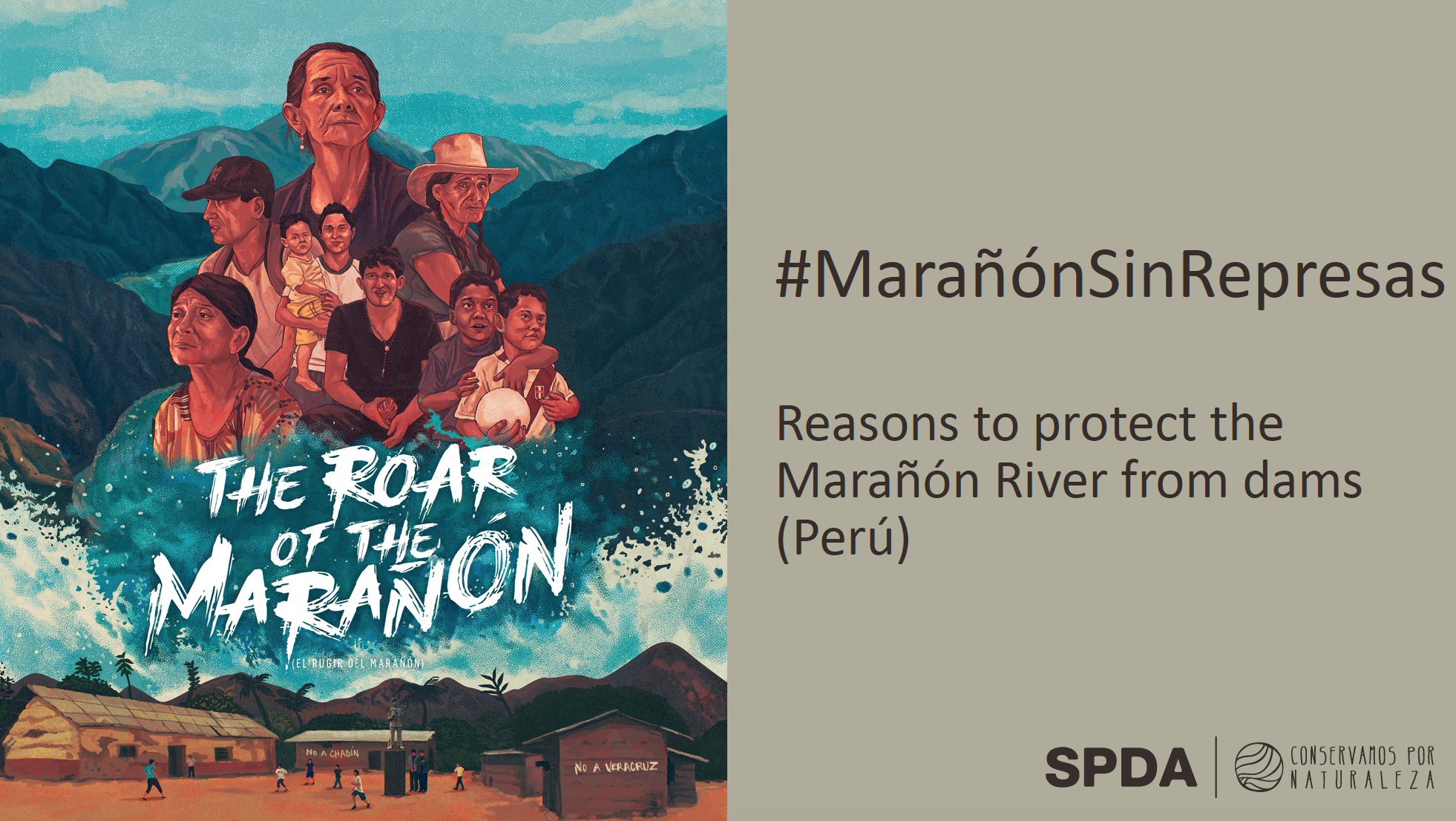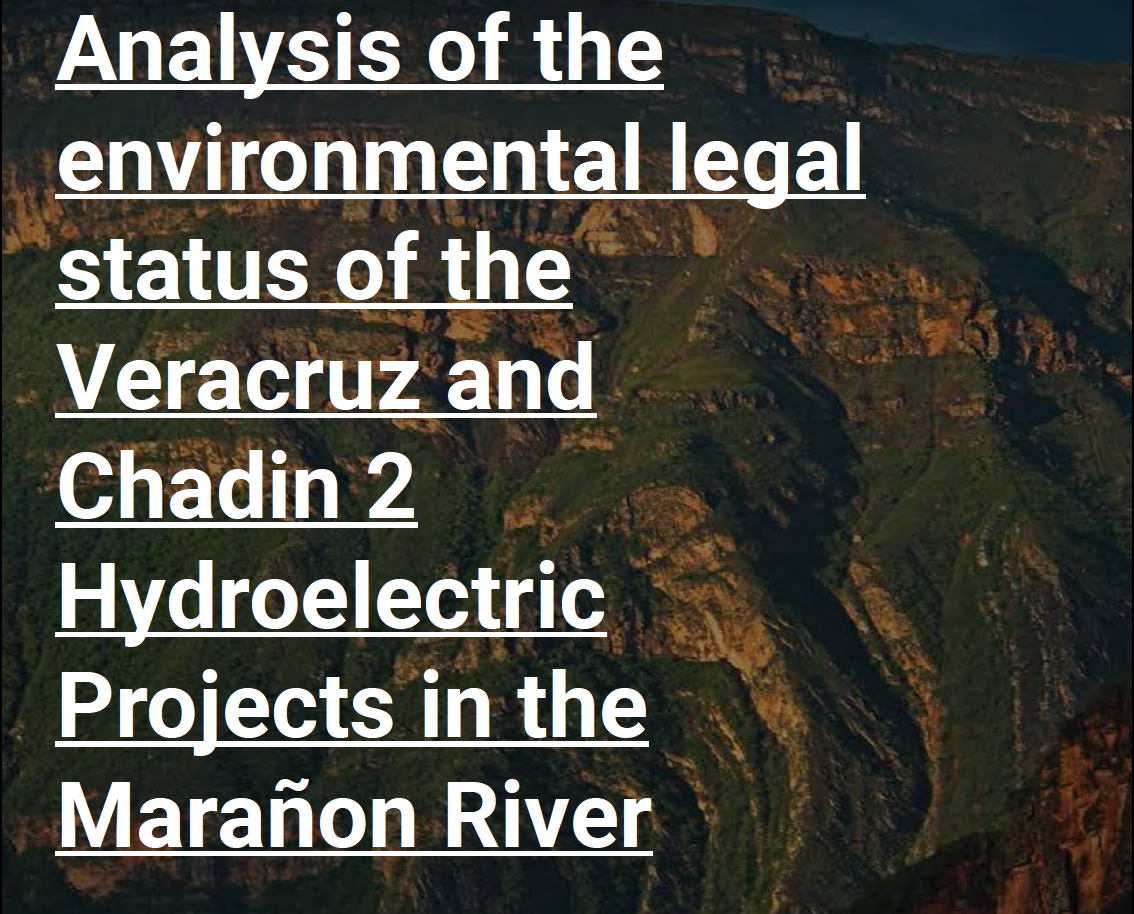Press Release: Endesa Renounces its rights to water, cancelling its hydroelectric Projects. Marañón Waterkeeper questions viability of Veracruz Dam on the Marañón.
FOR IMMEDIATE RELEASE
Contact: Benjamin Webb, International Coordinator, Marañón Waterkeeper
benjamin@maranonwaterkeeper.org +51 9 51242355
Lima, Peru, Friday, September 02, 2016 –– Endesa Chile, a multinational energy company with US $4.2 billion in 2015 revenues, is relinquishing rights this week to develop large hydroelectricity projects on five river basins in Chile. The decision was adopted after analysis including social and environmental impacts showed that these projects are not technically nor economically feasible.
Parent company Enel is the largest investor in the Veracruz Dam project on the Marañón River in Peru. According to information taken from the MINAM website, the Veracruz dam wall would be 168m and generate 730MW. The Veracruz project would inundate large areas of endeminic ‘dry Forest of the Marañón’ and will have downstream impacts on Awajún communities.

The canyon that would dissapear beneath the Veracruz Dam on the Marañón River. Photo: Bruno Monteferri.
Marañón Waterkeeper, member of the global Waterkeeper Alliance and lead by Peruvian Non-Profit Sociedad Peruana de Derecho (SPDA) reflects on what impact this decision will have on future investment for mega dams in the Peruvian Amazon.
Marañón Waterkeeper Bruno Monteferri says “We hope that this will lead to a closer inspection of the social and environmental cost of Veracruz and the other hydropower projects planned for the Marañon river, before governments and companies move ahead. The Marañon is the main tributary of the Amazon river. Every project should be analyzed carefully considering the whole basin and the overall type of activities developed. A sum of independent environmental impact assessments from one sector of the government are not enough, because the impacts are cumulative. These projects should be suspended until the government completes a Strategic Environmental Assessment for the Marañón River and Peru has a clear vision for the Marañon River.”
Shareholders of Endesa Chile will be voting in October whether to change the company’s name to Enel Generación. The name change would align with the name of the company’s Italian majority owner, Enel, and is part of a strategic shift away from hydroelectricity generation, according to news reports. The change would distance the company from a brand that has been embroiled in social conflicts in Chile since the 1990s, when it won government approval to relocate indigenous groups and build dams on the Bio Bio River.
“We applaud Enel Peru for investing in two of Peru’s largest wind and solar plants, and hope that this change in company direction means they will reconsider their involvement with the Veracruz Project. We certainly do not want to see history repeat itself by creating the massive social conflict that occurred on the Bio Bio”.
“Judging by global trends away from large dams, and what has happened in Chile over the last 10 years, there will be significant public resistance to these projects. Especially when scientific studies such as those presented by the Amazon Waters initiative, are confirming that large hydropower can have devastating effects when built in the fragile Peruvian Amazon.”
Monteferri urges the Peruvian government “We should not waste this opportunity to carefully assess and plan what is the best energy future for Peru; both socially, economically and environmentally”. In Peru, the combined potential for solar and wind energy is nearly 10 times the national demand. In the last decade the costs have gone down so much that generation from these resources in Peru is below $36-48/MWh, and still going down, making it among the cheapest energy in the world.
In an article published last week in Energia y Negocios Peru, Renewable Energy Expert José Estela Ramírez states “Today Peru consumes around 6,500 MW at maximum demand in the national grid… currently we have an installed generation country of 10,000 MW, ie we have an over generation of more than 50%”. Estela also states that true renewables (wind and solar) are increasingly cost competitive, but do not include the enormous social and environmental impact that comes with large dam construction.
Through Endesa Chile, Italian parent company Enel has faced several defeats recently with cancelation or invalidation of massive dam projects on the Futaleufu, Baker and Pascua. Monteferri says “similar resistance is building here in Peru. We can no longer ignore the social and environmental costs of mega-dams, especially when affordable, truly renewable alternatives exist”.
About Marañón Waterkeeper:
‘Marañón Waterkeeper’ is part of the global Waterkeeper Alliance, who’s mission is to protect the right to drinkable, fishable water around the world. Marañón Waterkeeper is lead by the Peruvian Society for Environmental Law (SPDA) a Peruvian NGO created thirty years ago to advance the creation of sustainable societies using laws and policies. Marañón Waterkeeper was founded in 2016 with the mission to protect Peru’s natural and cultural heritage, particularly in the Marañón watershed.
For more information please visit maranonwaterkeeper.org or follow on Instagram @maranonwaterkeeper, Twitter @MaranonWk or Facebook @maranonriverwaterkeeper.
Also follow the Remando Juntos Campaign on Facebook: @Remandojuntosmaranon
Related:
Outside Magazine, Chile’s Best Whitewater Rivers Won’t Be Dammed
- Endesa Chile Renuncia A Derechos De Agua Asociados A Cinco Proyectos
- El Marañón y las energías limpias










Leave a Reply